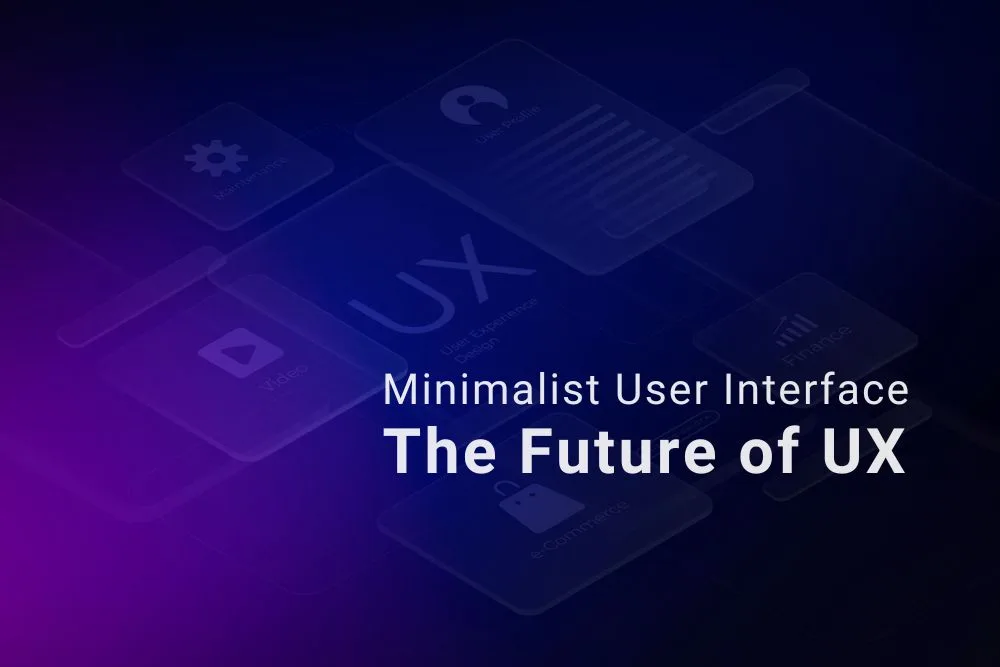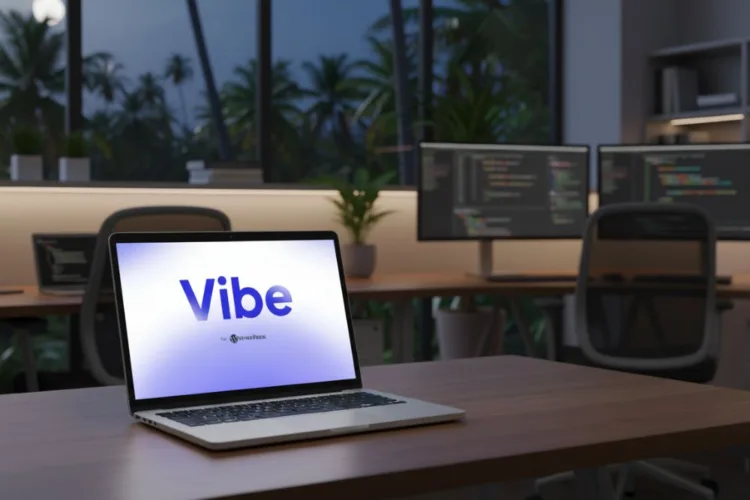
In recent years, the digital marketing field has seen a significant change towards simplicity in design. The minimalist user interface (UI) is a dominant trend in web and app design, largely due to its focus on user experience (UX). The minimalist design perspective, which prefers clean, organized interfaces with a focus on essential elements, is rapidly gaining popularity for a good reason. It provides users with a more intuitive, aesthetically pleasing and efficient way to interact with digital products.
Due to continuous changes in the digital marketing field, minimalist UI design is set to play an important role in shaping the future of UX. Let’s examine everything in detail!
What is Minimalist UI Design?
Minimalist design is an approach that focuses on simplicity by eliminating unnecessary elements, opting for clean lines, plenty of white space and an overall focus on the most important content. The goal of minimalist UI design is not just to reduce visual chaos, but to create an environment where users can focus on key actions, engage more effectively, and navigate more intuitively. Prioritizing essential elements and stripping away distractions, minimalist design aims to create a more user-friendly experience.
Key Principles of Minimalist UI Design
- Simplicity: The heart of minimalist design is simplicity. It aims to remove excess content, depending on only the most essential elements to communicate the message. This means cutting out non-essential graphics, overly complex typography and anything that might overwhelm the user.
- Whitespace: Often referred to as “negative space,” whitespace is important in minimalist design. It provides breathing room for the content and guides the user’s eye to key areas of the page, allowing the design to feel more balanced and focused.
- Focus on Functionality: In minimalist UI design, every element serves a clear purpose. Buttons, navigation bars and interactive elements are prioritized based on functionality. The design highlights usability and makes interactions smooth.
- Typography: Typography is often the hero in minimalist design. With fewer visual elements competing for attention, typography is used to convey tone, establish hierarchy and guide users through the interface. Large, bold fonts can create a sense of simplicity and clarity.
- Color: Minimalist designs often use a limited color palette. The goal is to use color purposefully, drawing attention to important elements like calls to action or key messages. Often, the color scheme will depend heavily on neutral tones with one or two accent colors.
Why Minimalist UI Design is the Future of UX
As digital products and experiences continue to grow in complexity, minimalist UI design is emerging as the key to creating more intuitive, accessible and user-friendly interfaces. Below are some reasons why minimalist UI design is balanced to overlook the future of UX.
1. Improve User Focus and Clarity
The modern user is overwhelmed with information. With so much digital content available, users are becoming more selective and impatient. Research shows that people are less likely to stay engaged with complex, cluttered interfaces. Minimalist UI design helps users focus on what matters most by eliminating distractions and presenting only essential information.
Using big white space and prioritizing content, the minimalist design draws attention to the most important actions and elements on the screen. For example, a simple, clean interface with clear calls to action makes it easier for users to understand what they need to do, if it’s making a purchase, filling out a form or navigating to another page.
2. Improved Usability Across Devices
With the rise of mobile and tablet usage, it’s more important than ever to design interfaces that work across a variety of devices and screen sizes. The minimalist design adapts well to smaller screens because it strips away unnecessary elements and focuses on the essentials. As a result, it improves the usability of mobile apps and websites, making them more accessible and responsive.
Minimalist UI design allows content to be presented straightforwardly, improving the user experience regardless of the device. The clean, focused design helps users navigate efficiently, avoiding frustration and confusion.
3. Faster Load Times
Users expect websites and apps to load quickly. Minimalist UI design can help achieve faster load times because it typically involves fewer elements, such as images, graphics and animations compared to more complex designs. As a result, minimalist designs often require less data and are easier to generate, leading to quicker page load times.
This is especially important for mobile users, who are often on slower networks. A minimalist approach can ensure that your website or app loads faster, leading to better user retention and a reduced bounce rate.
4. Better User Retention and Engagement
When users experience a reflexive, visually appealing and easy-to-navigate interface, they are more likely to stay engaged and return. Minimalist design creates a smooth, enjoyable experience by presenting only relevant information in an easily digestible format.
In difference, messy designs with too many competing elements can overwhelm users, leading them to abandon the site or app altogether. A simplified interface allows users to engage with content in a more meaningful way, increasing the likelihood of conversions, sign-ups and repeat visits.
5. Consistency Across Platforms
Consistency is a key element of UX design and minimalist UI can help maintain this consistency across different platforms. A simple layout, limited color palettes and clear typography can be applied to both web and mobile interfaces. This ensures that users have a connected experience across platforms, which is important in creating a strong brand identity.
6. Universal Appeal
Minimalist design has a universal appeal because it’s easy to understand and engage. Its simplicity transcends cultural and language barriers, making it ideal for global audiences. The clear, reflexive design allows users from different backgrounds and with varying levels of tech expertise to interact with the interface smoothly.
Focusing on essential content and eliminating unnecessary distractions, minimalist UI design makes it easier for users to understand and navigate digital products, regardless of their prior experience with technology.
7. Focus on User Intentions
Minimalist design highlights the user’s intent, which is key to creating a smooth and efficient experience. By focusing on core actions, such as navigation, purchasing or filling out a form, minimalist interfaces ensure that users can achieve their goals with minimal effort. The absence of excessive design elements allows users to complete tasks more quickly and efficiently, without being distracted by extraneous features.
8. Adaptability and Future-Proofing
As technology continues to evolve, minimalist UI design is adaptable and future-proof. It is flexible enough to accommodate new technologies, devices, and user behaviors without sacrificing usability. Whether it’s a virtual reality experience, voice-activated interface, or the next big trend in design, minimalist principles will continue to be relevant and effective.
Minimalist design is based on fundamental principles that prioritize user needs over aesthetics or tricks. As long as digital interfaces require simplicity and clarity, minimalist design will remain a staple of UX.
Minimalist UI design is more than just a trend; it is the future of UX. The digital field is becoming increasingly complex, users are seeking simplicity, efficiency and clarity in their online experiences. The minimalist design helps achieve this by focusing on essential content, reducing distractions and creating a more reflexive, user-friendly environment.
The benefits of minimalist UI design is improved usability, faster load times, better engagement and universal appeal making it the ideal approach for meeting the needs of today’s users. The technology continues to advance and the demand for better user experiences grows, minimalist UI design will remain at the top of UX innovation, ensuring that digital products are not only visually appealing but also effective and efficient.



